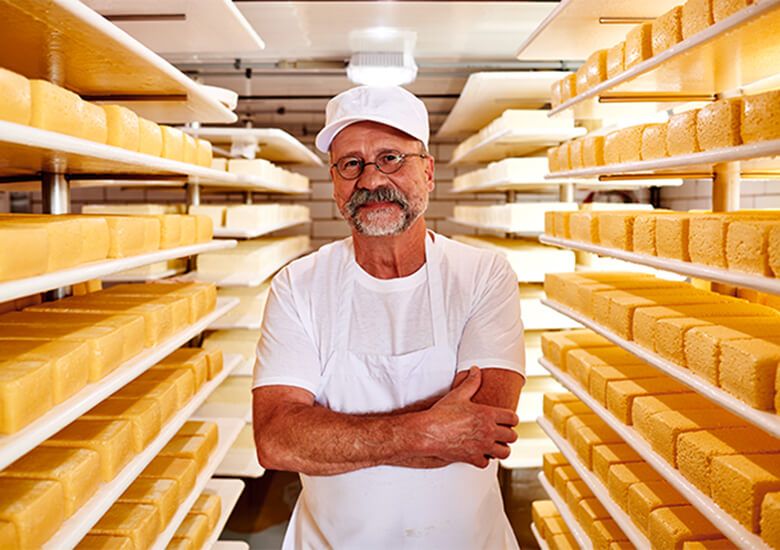A Preference of Credibility: Floridia Cheese Melbourne and Its Workmanship
A Preference of Credibility: Floridia Cheese Melbourne and Its Workmanship
Blog Article
Unlocking the Tricks of Artisanal Cheese Making: A Detailed Do It Yourself Guide
In the realm of culinary craftsmanship, artisanal cheese making stands as a testimony to the delicate balance between tradition and innovation. As we get started on this journey to debunk the art of creating splendid cheeses, we are faced with a tapestry of tricks and abilities waiting to be unraveled.
Selecting the Right Milk
When embarking on the trip of artisanal cheese making, the choice of milk plays a critical duty in determining the top quality and qualities of the last item. The kind of milk selected impacts the flavor, structure, and in general profile of the cheese.
In addition, the source of the milk, whether from cows, goats, sheep, or buffalo, contributes distinct flavors and qualities to the cheese. Each type of milk brings its very own subtleties, permitting for a wide range of cheese selections to be crafted based on the picked milk.
Culturing and Coagulating
To initiate the cheese-making procedure, the essential actions of culturing and coagulating need to be meticulously executed to transform milk into curds and whey. Culturing includes introducing advantageous bacteria to the milk, which then begins the fermentation process. These microorganisms convert lactose (milk sugar) into lactic acid, developing the acidic atmosphere necessary for coagulation. The type of society used can dramatically affect the taste, structure, and ripening of the last cheese item.

The timing and temperature control throughout culturing and coagulation are crucial factors that affect the final end result of the cheese. Correct execution of these actions is vital to guarantee the preferred appearance, flavor, and uniformity of the artisanal cheese being created.
Draining Pipes and Pushing Curds
After the milk healthy proteins have coagulated and the curds have been reduced to launch whey, the next critical step in artisanal cheese making involves draining pipes and pushing the curds to achieve the preferred appearance and uniformity of the final cheese product. The time for draining pipes can differ depending on the type of cheese being made and the wanted wetness content.
Pressing assists remove any kind of continuing to be whey and compacts the curds to create a strong cheese wheel. Appropriate draining pipes and pressing are critical actions that dramatically affect the high quality and qualities of the artisanal cheese being produced.
Aging and Flavoring Strategies
Carrying out meticulous aging and flavor strategies is critical in improving the depth and intricacy of artisanal cheeses, elevating their preference accounts to splendid degrees of refinement and class. Aging plays an essential duty in developing the distinct tastes and textures that differentiate artisanal cheeses.
Seasoning methods likewise contribute dramatically to the final taste of artisanal cheeses. Cheesemakers might select to introduce additional tastes by integrating active ingredients such as natural herbs, flavors, or perhaps fruits into the cheese during the manufacturing procedure. In addition, some cheeses are washed or rubbed with different liquids, such as salt water or alcohol, to boost their textures and flavors.
Wrapping and Storing Cheeses

Conclusion
In verdict, mastering the art of artisanal cheese making involves thoroughly choosing the appropriate milk, adhering to precise culturing and coagulating processes, draining and pushing curds properly, and utilizing various aging and flavoring methods. Keep in mind to wrap and keep your cheeses effectively to ensure optimal flavor and texture development.
Each type of milk brings its own nuances, allowing for a broad range of cheese varieties to be crafted based on the chosen milk.After the milk proteins have actually coagulated and the curds have actually been reduced to launch whey, the following crucial step in artisanal cheese making includes draining and pressing the curds to achieve the desired appearance and uniformity of the last cheese product. A lot of cheeses ought to be wrapped in wax paper or cheese paper to permit them to breathe while protecting them from drying out. For cheeses that require to proceed aging, such as bloomy skins or washed rinds, guarantee they are saved in a cool setting like a cheese cavern or a fridge set to the hop over to these guys suitable temperature level. By paying attention to the wrapping and storage space of artisanal cheeses, cheese makers and fanatics news can maintain the stability of these specials and completely enjoy their intricate tastes.
Report this page